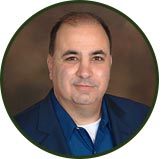What is the biggest defeat of a tester? A defect creeping into production – a simple but critical defect. Sometimes complicated defects are difficult to find in the short time allowed for testing, but simpler defects creeping out, and creating havoc, could be an embarrassment and bring into question the tester’s skill. Even if we took this a step away from the individual, to the team, the story remains same. You do not want to miss finding critical defects.
And there is no shortcut to finding defects. Testing has to be strategized well and executed thoroughly – that’s the only way. As a tester, it’s not a surprise that we are hard pressed for time. Like all the teams involved (why say testing team only!). Constantly struggling to stay updated on changes, update test cases, find defects, communicate them, and support the development team in fixing them and retesting. Testers also remain busy – Sending all sorts of status reports to different levels of management.
Is there a way testers can find more time to do strategizing and actual testing within the given time limits and yet cover all possible permutations and combinations of test data and scripts one can think of?
Test Automation is effective in helping testers find more time without giving up on testing various aspects of the product. In fact, automation helps increase our coverage. So, not only does it allow the tester to focus on activities requiring more thinking, it also provides better coverage in terms of numbers of samples tested.
Test automation is any use of tools to aid testing, “An automatic way of doing what testers were doing before” – says James Bach. Test automation means extending the reach of testers through tools, not replacing them or their efforts.
The overall effort only increases, just like the overall quality. But after a while, the efforts can also be contained if the changes are not frequent. It’s a trade off one needs to look at – how much effort for how much quality.
But as a functional tester who has never used automation before, actively for testing, how do you get started? One has all sorts of thoughts coming up – Is it important for you to know coding? Which tool to use? How to create test scripts? What needs to be planned for and taken care of, before we actually start the test automation? How to model the automation scripts so we can make the best use of them and also reuse as much as possible.
Here is Jim Trentadue’s webinar on automation: Fast start your test automation. It is your 101 class for test automation – it shall help you hit the ground running if you are learning to make use of automation in your testing. Please go through it and share your feedbacks and questions and we shall try to get Jim to respond.

Smita Mishra
STP Webinar Host, CEO at QAzone Infosystems
Smita Mishra A passionate tester for past 11 years. Speaker at various Testing and Project Management conferences. Currently CEO at QAzone Infosystems since June 2010.QAzone is a niche testing organization offering testing services across all domains/technologies/business processes.
Webinar presented on March 1, 2017
Fast Start Your Automation
Test Automation arguably is more important and has more focus than we have ever seen in the QA world. But many testing professionals face the challenge of where to start and what to start with. Coupled with the speed of Agile teams’ delivery cycles, this task could be daunting.
Join Jim Trentadue in a session to address just that and how to ‘Fast Start your Test Automation’. The key takeaways attendees will learn are:
- How to Standardize Development & Test Design reviews pertaining to automation
- How to Improve Test Steps & Procedures
- How to Stabilize Object Recognition techniques
Our Speaker: Jim Trentadue - Software Testing Consultant
 Jim Trentadue has more than seventeen years of experience as a coordinator and manager in the software testing field. Jim’s various roles in testing have focused on test execution, automation, management, environment management, standards deployment, and test tool implementation. In the area of offshore testing, he has worked with multiple large firms on developing and coordinating cohesive relationships. As a speaker, Jim has presented at numerous industry conferences, chapter meetings, and at the University of South Florida’s software testing class, where he mentors students on the testing industry and discusses trends for establishing future job searches and continued training.
Jim Trentadue has more than seventeen years of experience as a coordinator and manager in the software testing field. Jim’s various roles in testing have focused on test execution, automation, management, environment management, standards deployment, and test tool implementation. In the area of offshore testing, he has worked with multiple large firms on developing and coordinating cohesive relationships. As a speaker, Jim has presented at numerous industry conferences, chapter meetings, and at the University of South Florida’s software testing class, where he mentors students on the testing industry and discusses trends for establishing future job searches and continued training.
